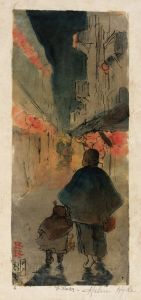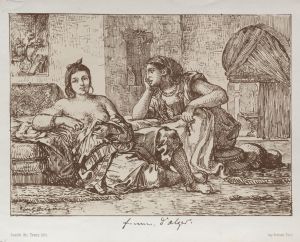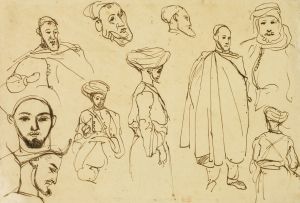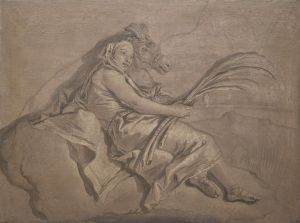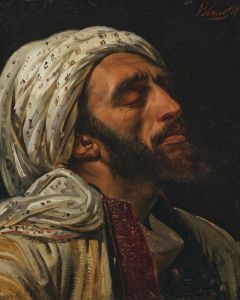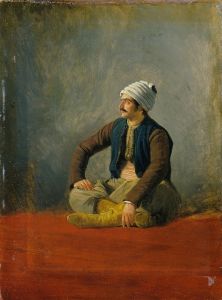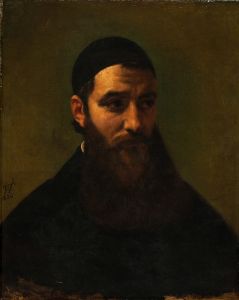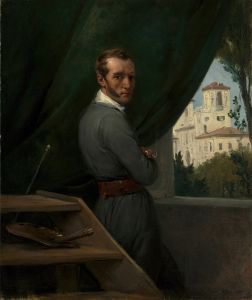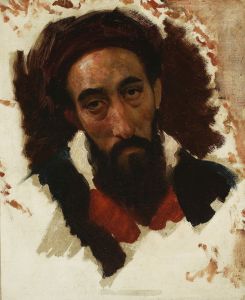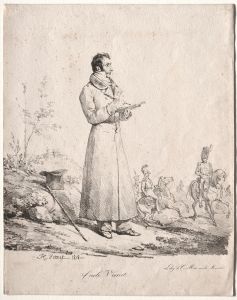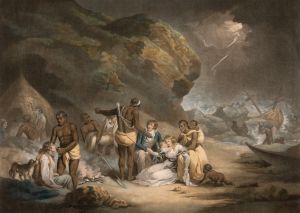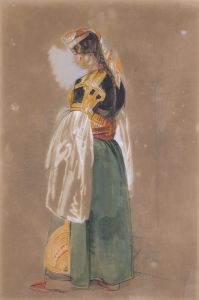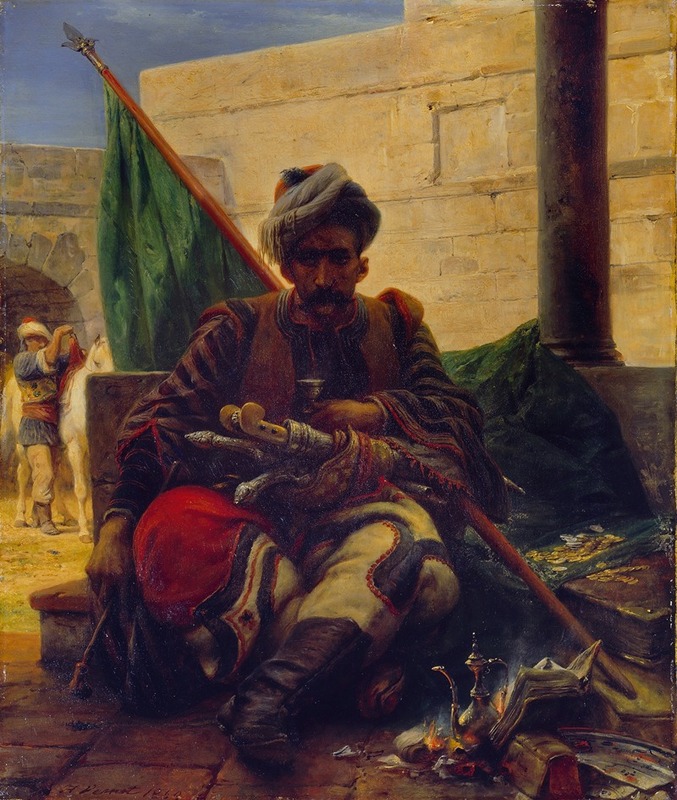
A Bashi-Bazouk
A hand-painted replica of Horace Vernet’s masterpiece A Bashi-Bazouk, meticulously crafted by professional artists to capture the true essence of the original. Each piece is created with museum-quality canvas and rare mineral pigments, carefully painted by experienced artists with delicate brushstrokes and rich, layered colors to perfectly recreate the texture of the original artwork. Unlike machine-printed reproductions, this hand-painted version brings the painting to life, infused with the artist’s emotions and skill in every stroke. Whether for personal collection or home decoration, it instantly elevates the artistic atmosphere of any space.
Horace Vernet's painting A Bashi-Bazouk is a notable work by the French artist, who was renowned for his depictions of military and historical subjects. Created in the 19th century, the painting portrays a Bashi-Bazouk, an irregular soldier of the Ottoman Empire. The term "Bashi-Bazouk" translates roughly to "headless" or "leaderless," reflecting the unstructured and often unruly nature of these mercenary troops. They were known for their lack of discipline and were employed by the Ottoman military for various campaigns, often gaining a reputation for both bravery and brutality.
The painting exemplifies Vernet's skill in capturing intricate details and his interest in exotic and Orientalist themes, which were popular in European art during this period. Orientalism, a trend in 19th-century European art and literature, often romanticized and depicted the cultures of the Middle East, North Africa, and Asia through a Western lens. Vernet's work reflects this fascination, as he meticulously rendered the clothing, weaponry, and demeanor of the figure to evoke a sense of authenticity and drama.
In A Bashi-Bazouk, the soldier is depicted in traditional Ottoman attire, which includes richly colored fabrics, a turban, and a variety of weapons. The attention to detail in the textiles and accessories highlights Vernet's ability to convey texture and materiality. The figure's pose and expression suggest a sense of pride and individuality, characteristics often associated with the Bashi-Bazouks in historical accounts.
Horace Vernet (1789–1863) was a prominent French painter who came from a family of artists. He gained recognition for his military scenes and portraits, often working on commissions for the French government and aristocracy. His works were celebrated for their vivid realism and dynamic compositions, which appealed to both contemporary audiences and patrons.
While A Bashi-Bazouk is not as widely discussed as some of Vernet's larger historical canvases, it remains an example of his interest in portraying diverse subjects and his technical prowess as a painter. The painting is part of the broader context of 19th-century European art, which frequently engaged with themes of empire, exoticism, and cultural representation.
Further details about the specific circumstances of the painting's creation, its current location, or its provenance are not readily available.





